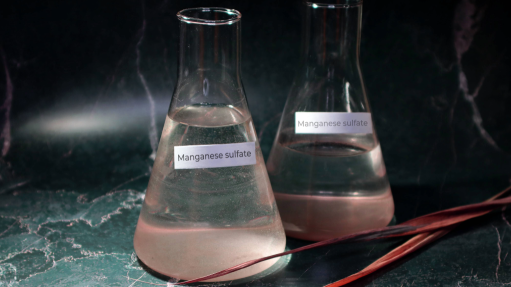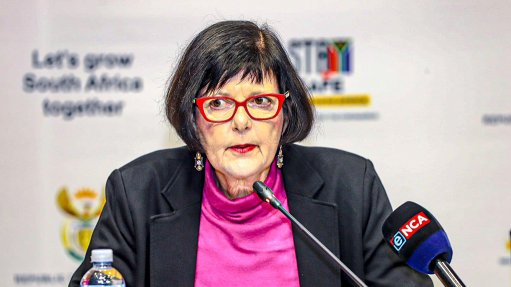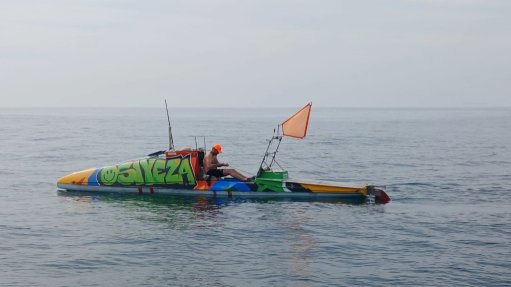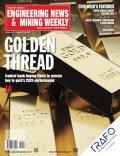Domestic expenditure on research and development increasing – HSRC
South Africa's gross domestic expenditure on research and development (GERD) in the 2021/22 fiscal year rose in real terms for the first time in four years, research policy agency the Human Sciences Research Council’s (HSRC's) 'South African National Survey of Research and Experimental Development Statistical Report 2021/22' shows.
Further, GERD as a percentage of gross domestic product (GDP), which is a measure of research and development intensity, in the 2021/22 fiscal year increased to 0.62% of GDP, up from 0.6% in the preceding year.
This growth amounted to a 6.9% year-on-year increase in 2021/22, from R25.97-billion in 2020/21 to R27.76-billion in 2021/22.
“South Africa is striving to reach higher levels of research and development intensity by increasing expenditure on research and development, which in turn can lead to new industries and boosting of existing ones, job creation, increased productivity and sustained economic growth.
“Nations that invest in research and development at a high enough intensity tend to lead in global competitiveness,” says HSRC chief research specialist and survey principal investigator Dr Nazeem Mustapha.
Key indicators highlight positive economic growth in South Africa for the period under review. According to Statistics South Africa, South Africa's GDP rebounded in 2023, rising by 4.7% in 2021/22 after a 6% decline during the Covid-19 pandemic in 2020/21.
“The growth in research and development expenditure is reassuring, although this comes off a very low base. The 2020/21 fiscal year’s decline in growth represented the biggest fall in research and development expenditure in the 20 years that the HSRC has been conducting the survey.
“We expect the next survey’s result to provide us with a better sense of what the trend is,” he adds.
GERD encompasses all spending on research and development on national territory in a given year. It includes domestically performed research and development, which is funded from abroad, but excludes research and development funds paid abroad, such as to international agencies.
“Nominal research and development expenditure rose across all five institutional sectors. However, the R3.48-billion increase in business sector research and development expenditure was the main contributor to the increase in GERD.
“The higher education sector also increased research and development expenditure by R446-million, the government sector increased by R235-million, and the not-for-profit sector increased research and development expenditure by R31-million,” notes Mustapha.
Government remains the largest funder of research and development, accounting for 52.5% of total funding, followed by business at 29%, and foreign sources at 14.5%.
Foreign funding has increased significantly over the past decade, with most investments directed towards the higher education and business sectors, he highlights.
Further, research and development personnel increased across all sectors, with a total increase of 2 857 individuals, a 3.5% increase year-on-year in 2021/22, including 1 716 researchers, which is a 2.8% increase.
Notably, State-owned enterprises (SoEs) increased their research and development expenditure.
Enterprises in the business sector employed 917 new research and development personnel, which includes technicians and researchers, but the sector shed 140 researchers during the 2021/22 year, Mustapha says.
Research and development activity in the manufacturing and financial services sectors has increased, with these sectors driving the majority of research and development expenditure.
Additionally, medical and health sciences continue to receive the highest research and development expenditure at 22.8% and social sciences received 18.4%.
Information, computer, and communication technology is the field of research with the third-highest research and development expenditure in South Africa at 13.1%, which surpasses the engineering sciences field at 11.7%.
However, growth in social sciences is stagnant. The increase in 2021/22 came mainly from research and development in the natural sciences.
Notably, investment in environmental research has increased, along with funding for priority policy areas such as biotechnology, space science and new materials, he highlights.
Additionally, research and development personnel increased by 1 657 in the higher education sector, 155 in the government sector, and 79 in the science councils’ sector. The non-profit sector recorded an increase in the research and development personnel headcount of 49.
In 2021/22, 1.9 full-time equivalent researchers were employed for every 1 000 research and development workers, which is an increase of 0.1 compared to the preceding year. The ratio of female researchers as a percentage of total researchers rose by 0.4 percentage points to 47%.
“A longitudinal analysis of shifts in the proportions of researchers and technicians, as well as the overall movement of research and development personnel, is of value,” says HSRC Centre for Science, Technology and Innovation Indicators executive head Dr Glenda Kruss.
“Such analysis, which is now possible with our time series data covering the past two decades, can inform future investments to grow skills and capabilities for the national system of innovation,” she notes.
“Analysis of research and development patterns in key growth and emerging sectors is now a priority to assess progress towards South Africa’s science, technology and innovation goals,” says Kruss.
“We invite stakeholders to participate in a virtual private sector forum planned for March 13 to discuss insights from the latest research and development and innovation evidence,” she adds.
Comments
Press Office
Announcements
What's On
Subscribe to improve your user experience...
Option 1 (equivalent of R125 a month):
Receive a weekly copy of Creamer Media's Engineering News & Mining Weekly magazine
(print copy for those in South Africa and e-magazine for those outside of South Africa)
Receive daily email newsletters
Access to full search results
Access archive of magazine back copies
Access to Projects in Progress
Access to ONE Research Report of your choice in PDF format
Option 2 (equivalent of R375 a month):
All benefits from Option 1
PLUS
Access to Creamer Media's Research Channel Africa for ALL Research Reports, in PDF format, on various industrial and mining sectors
including Electricity; Water; Energy Transition; Hydrogen; Roads, Rail and Ports; Coal; Gold; Platinum; Battery Metals; etc.
Already a subscriber?
Forgotten your password?
Receive weekly copy of Creamer Media's Engineering News & Mining Weekly magazine (print copy for those in South Africa and e-magazine for those outside of South Africa)
➕
Recieve daily email newsletters
➕
Access to full search results
➕
Access archive of magazine back copies
➕
Access to Projects in Progress
➕
Access to ONE Research Report of your choice in PDF format
RESEARCH CHANNEL AFRICA
R4500 (equivalent of R375 a month)
SUBSCRIBEAll benefits from Option 1
➕
Access to Creamer Media's Research Channel Africa for ALL Research Reports on various industrial and mining sectors, in PDF format, including on:
Electricity
➕
Water
➕
Energy Transition
➕
Hydrogen
➕
Roads, Rail and Ports
➕
Coal
➕
Gold
➕
Platinum
➕
Battery Metals
➕
etc.
Receive all benefits from Option 1 or Option 2 delivered to numerous people at your company
➕
Multiple User names and Passwords for simultaneous log-ins
➕
Intranet integration access to all in your organisation

















